*THE SCENTS OF THE SPICE ISLANDS*
A CRUISE FROM AMBON TO TERNATE ISLANDS, EASTERN INDONESIA
12 days/11 nights
16 - 27 September 2019

The Moluccas are the original Spice Islands; a magical destination, beautiful, remote and unspoiled, with a long, fascinating and turbulent history. For millennia these fertile volcanic isles were the world’s only source of the ‘holy trinity’ of rare spices; cloves, nutmeg and mace, which were once worth their weight in gold. Be transported back in time as we wend our way between dramatic volcanic islands interspersed with stops at pristine white-sand beaches with no other tourists in sight. Relish the opportunity to snorkel on some of the world's most beautiful and biodiverse coral reefs. Learn about the international spice trade during the 17th century; visit historic outposts and colourful island villages; experience the marketplaces and inhale the aroma of the spice plantations.
One of the most important of all visitors to the Moluccas was British naturalist Alfred Russel Wallace, who travelled among the islands for more than three years documenting their biodiversity. Not only did he discover many of the region's most iconic animal species, but it was there that he famously conceived the theory of evolution by natural selection, which he published jointly with Charles Darwin in 1858. Wallace's book about his travels The Malay Archipelago is still a popular read today, and 2019 sees the 150th anniversary of its publication and a perfect excuse to follow in Wallace's wake.

Alfred Russel Wallace in the Malay Archipelago.
SeaTrek's ship the Ombak Putih is a beautifully-modernised, traditional Indonesian pinisi vessel and in it we will travel in style to places that very few tourists ever visit. We will have comfortable cabins and delicious food. For us there will be none of the hardships that Wallace experienced: more than once he had to make a small parakeet last for two frugal meals as he sat in his small leaking ant-infested hut in the pounding tropical rain.


Top & Bottom: The Ombak Putih. Copyright G. Beccaloni
The Ship's Naturalist, Dr George Beccaloni, is a knowledgeable all-round natural historian and an expert on cockroaches, butterflies and the life and work of Wallace. He has visited Indonesia seven times on natural history-related trips and has been on four SeaTrek cruises. George will be delivering a series of talks throughout the cruise and will screen a couple of films about Wallace. These include the multi award winning BBC documentary, Jungle Hero presented by comedian Bill Bailey, which George was the historical consultant for, spending several weeks in Indonesia helping with the filming.
George is the Director of the Wallace Correspondence Project which aims to locate, digitize, transcribe, interpret all of Wallace's surviving letters and other manuscripts. Its online digital archive and publications will be a key resource for all those interested in the life and work of this great man. SeaTrek will be generously donating a proportion of the profits from this cruise to help the project continue its valuable work.
ITINERARY
For a map of the route click HERE
Day 1
Ambon town is one of the oldest European outposts in the region and in Wallace's time it was the capital of the Moluccas. Wallace collected some stunning species on the island and said that it "...always remain as a bright spot in the review of my Eastern travels, since it was there that I first made the acquaintance of those glorious birds and insects, which render the Moluccas classic ground in the eyes of the naturalist, and characterise its fauna as one of the most remarkable and beautiful upon the globe." Upon arrival at the airport cars will take you to the Ombak Putih at her mooring in the harbour. After you have settled in and freshened up, we will go on an (optional) short tour of the island. We will start with a visit to the north of the island and visit Hitu Lama, the ancient port of the Spice Trade that was in use for centuries before Europeans made it to the Indies. We will visit the market and see a traditional Balieo house. Also on our tour will be the ancient Waipauwe Mosque (1414), the Immanuel Church (1512) and finally Fort Amsterdam (1514), one of the first European forts built in the Moluccas. Rumphius, an important German botanist, lived in the fort from 1660 to 1670 and we will see copies of some of his psychedelic paintings of local brightly coloured fish. After this we will return to the boat for lunch before heading out on our way to the Banda Islands.
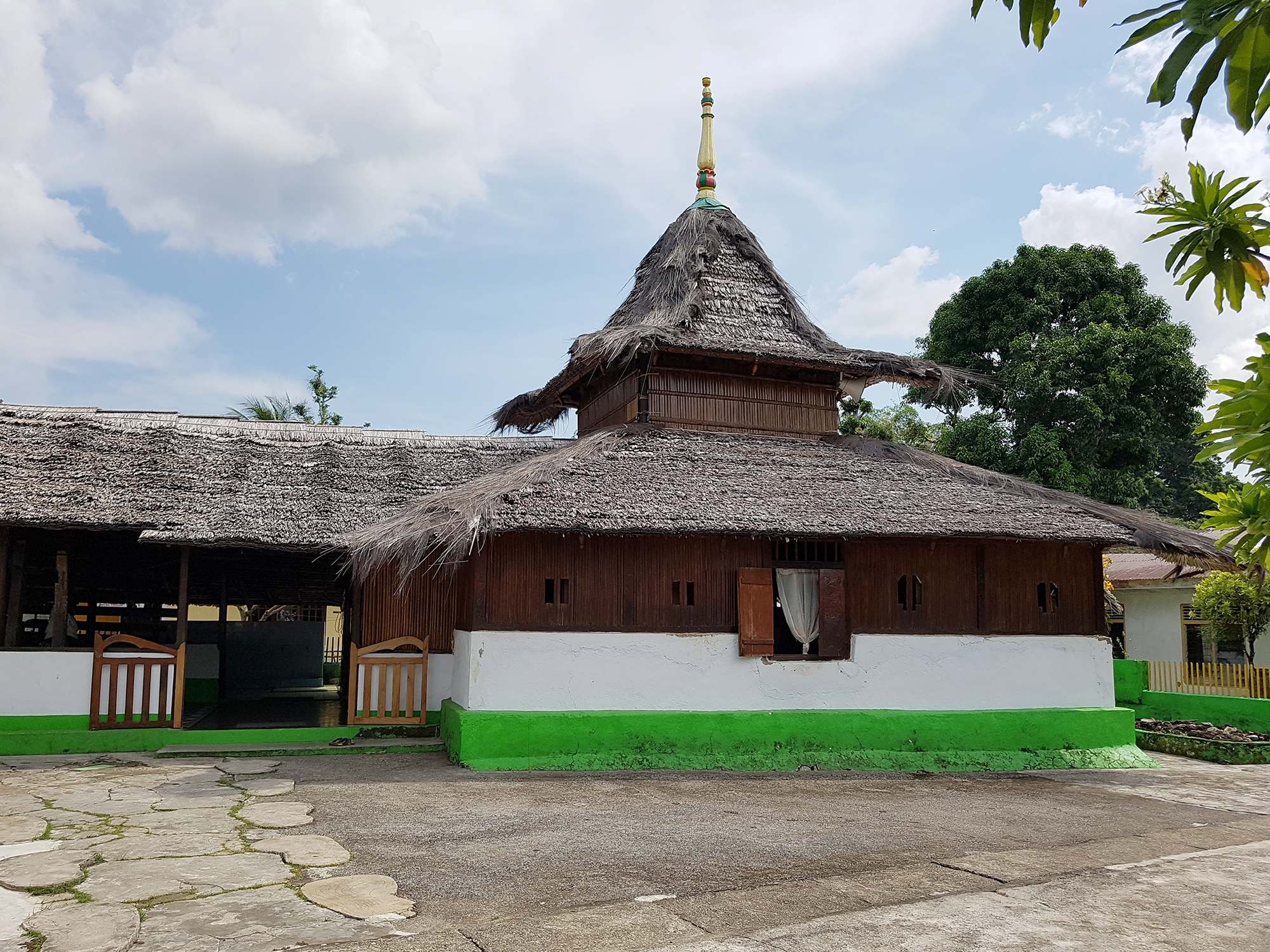
Waipauwe Mosque. Copyright G. Beccaloni.
Day 2
Today we will reach the remote and legendary Banda Islands. Famous for their natural beauty and cultural heritage, and the well-preserved remnants of an extraordinary history of imperialist rivalry, these islands are quite simply one of Indonesia’s highlights. Banda was originally the world’s only source of nutmeg and mace, valued for their rarity and high cost by aristocrats and elites. Today Banda’s quiet and charming ambiance belies a dramatic and often tragic history, including war, massacre, earthquake and eruption. This is a very special destination.

Gunung Api from Lonthoir Island. Copyright G. Beccaloni.
Since conditions of wind and tide will determine the order in which we visit various Banda islands, our activities here can’t be assigned to a particular day. Here’s what we aim to cover. In the capital Bandaneira, on the biggest island, Neira, we land near the elegant arches of Hotel Maulana – a little slice of Somerset Maugham. It’s a pleasant stroll through the quaint colonial outpost’s characterful streets, inspecting notable residences, a museum, churches and a waterfront market. Brooding over all is the mediaeval-looking Fort Belgica, its five crumbling bastions now solidly rebuilt. The population is a handsome mix of Malay, Arab, Dutch and Melanesian. Just across the harbour is Banda’s perfect, jungle-clad volcanic cone Gunung Api (‘Fire Mountain’ – 640 metres). The fit and ambitious might make an early morning ascent up a challenging track to the top for stunning views. There are some excellent coral reefs nearby and we should see some amazing marine life whilst snorkelling. Ironically, in the less-than-pristine waters of the harbour we have a good chance of seeing (at dusk) arguably the world's most stunning fish, the small but jewel-like Mandarin Fish.
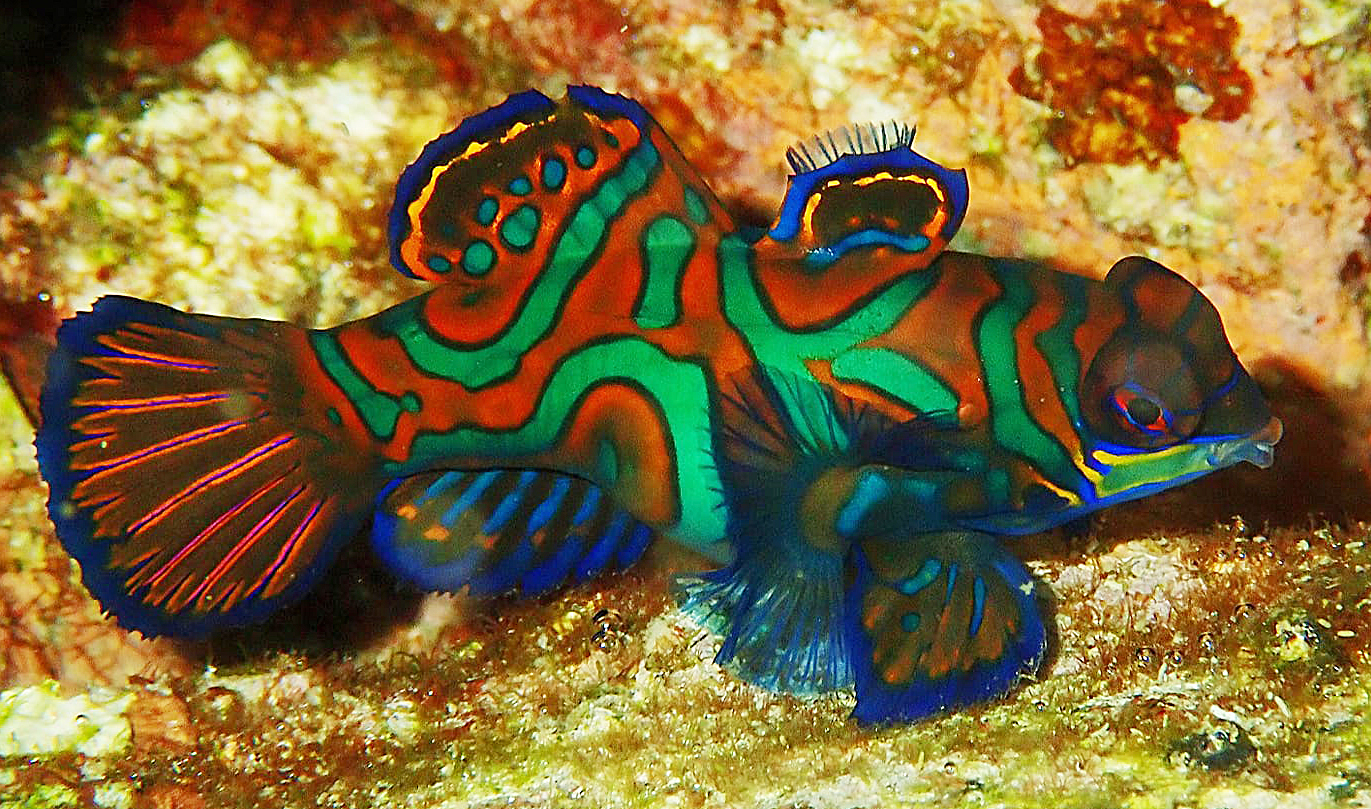
A female Mandarin Fish. Copyright G. Beccaloni
Days 3 & 4
We choose from some of the other small islands of the Banda archipelago – Lonthoir, Ai, Run, Hatta – each of them with its own remnants of old plantations, Dutch cemeteries and fortifications. The tiny outlying island of Run was the subject of an unbelievable real estate deal when in 1667, under the Treaty of Breda, it was ceded by the English to the Dutch in exchange for Manhattan. Yes, The Manhattan where New York stands. On the island of Ai we can visit Fort Revenge, built by the English before being captured by the Dutch. On Lonthoir we will enjoy the tranquil beauty of nutmeg groves, where the shapely fruit-bearing trees grow in the shelter of towering, gigantic kenari or native almond trees. With any luck we will spot the Elegant Imperial Pigeon, a species Wallace discovered and named, which can swallow nutmegs whole.
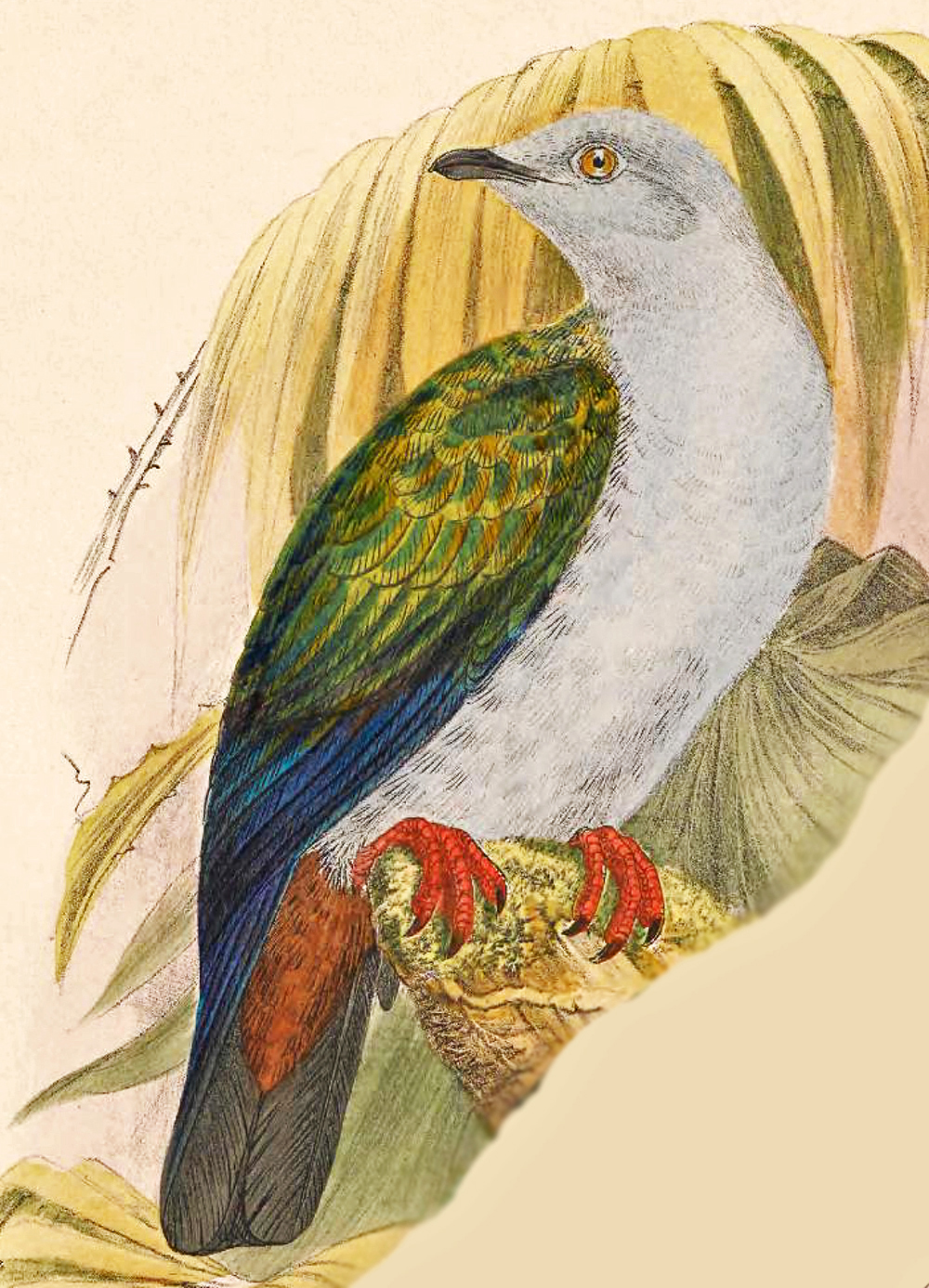
The Elegant Imperial Pigeon.
We will observe the age-old technique of harvesting by hand, and can taste (and buy) baked goods, condiments and jams flavoured with fresh mace and nutmeg. The fruit enclosing the nutmeg seed is sold dried and has a unique and intense flavour. It is a delicacy rarely obtainable outside the Banda Islands. We will also climb up to fortress Hollandia and go on to meet the last of the ‘perkeniers’ – the small-holder farmers who managed the plantations for the Dutch, on land parcels known as ‘perken’. You’ll learn of more recent wars and eruptions that shook these lovely islands, and value even more their current peace and tranquillity.

Top: fresh nutmeg covered in mace. Bottom: dried nutmeg and mace. Copyright G. Beccaloni
Leaving Banda we will navigate through the Sonnegat (‘Sun’s gap’) between Neira and Gunung Api, possibly escorted by kora-kora – the big Moluccan galleys used traditionally for ceremony and warfare, propelled by banks of warrior-oarsmen.
Day 5
On Saparua we land beside Dutch Fort Duurstede (1691), stormed in 1817 in a revolt led by Ambonese Kapitan Pattimura, a national hero and martyr. His story is told by vivid museum dioramas. Brightly painted bemo mini-buses will take us to a morning market before we sail to nearby Nusalaut. Rarely visited by outsiders, this island is home to a Christian community after early missionaries planted their faith here at the same time that Islam was spreading through the archipelago. We will visit the Eben-Haezer church founded in 1719. Nearby is the restored Dutch Fort Beverwyck, built from 1657 in a distinctive architectural style we’ve not yet encountered. A highlight here is a lunchtime feast of wonderful local dishes – freshly prepared by villager hosts from forest, garden and sea produce. It’s your once-in-a-lifetime opportunity to try papeda, the most famous and unusual of the many sago dishes in this region. Our next destination is the Island of Manipa.
Day 6
Manipa Island is said to have magical powers, because none of the Portuguese, Dutch or WW2-Japanese who occupied the surrounding islands ever landed here. The spell doesn’t apply to Indonesian ships, so we land at Uwe township for lessons in village technology. Its gardens produce cashews, while the leaves of forest Melaleuca cajuputi are pot-distilled to make a volatile oil called kayu putih or cajeput. It’s famed throughout Indonesia as a universal panacea: cosmetic, antiseptic, insecticide, decongestant, analgesic, expectorant, anti-spasmodic, stimulant and tonic! We also view production of the traditional Moluccan food staple, sago, a nutritious flour washed from the fibrous trunk of the sago palm. Sago can be baked into easily transportable dry cakes, which Wallace often subsisted on, while the palm also provides building material and thatch. After an afternoon snorkelling, we will cruise on towards Belang-Belang.


Top: extracting sago starch. Bottom: sago cakes drying in the sun.
Day 7
Deserted, white-sand Belang-Belang is a real beachcomber’s paradise, where we can launch our full flotilla of watercraft, kayaks and paddle boards. At Obi Latu, mountains clad in forest and clove plantations plunge spectacularly into the sea. We will visit isolated Manatahan, a village of migrant Butungese from Sulawesi hundreds of miles to the west. Migration is not unusual in this island world where people are accustomed to moving by boat, and islands are sparsely populated or uninhabited. In past times the picturesque channels around Obi were dotted with the sails of local spice traders, Portuguese caravels, Spanish galleons, Dutch jachts and English pinnaces. Now we encounter friendly fishers and their outrigger dugouts, colourful timber island-trading craft and sometimes little lambo sloops still trading under sail.
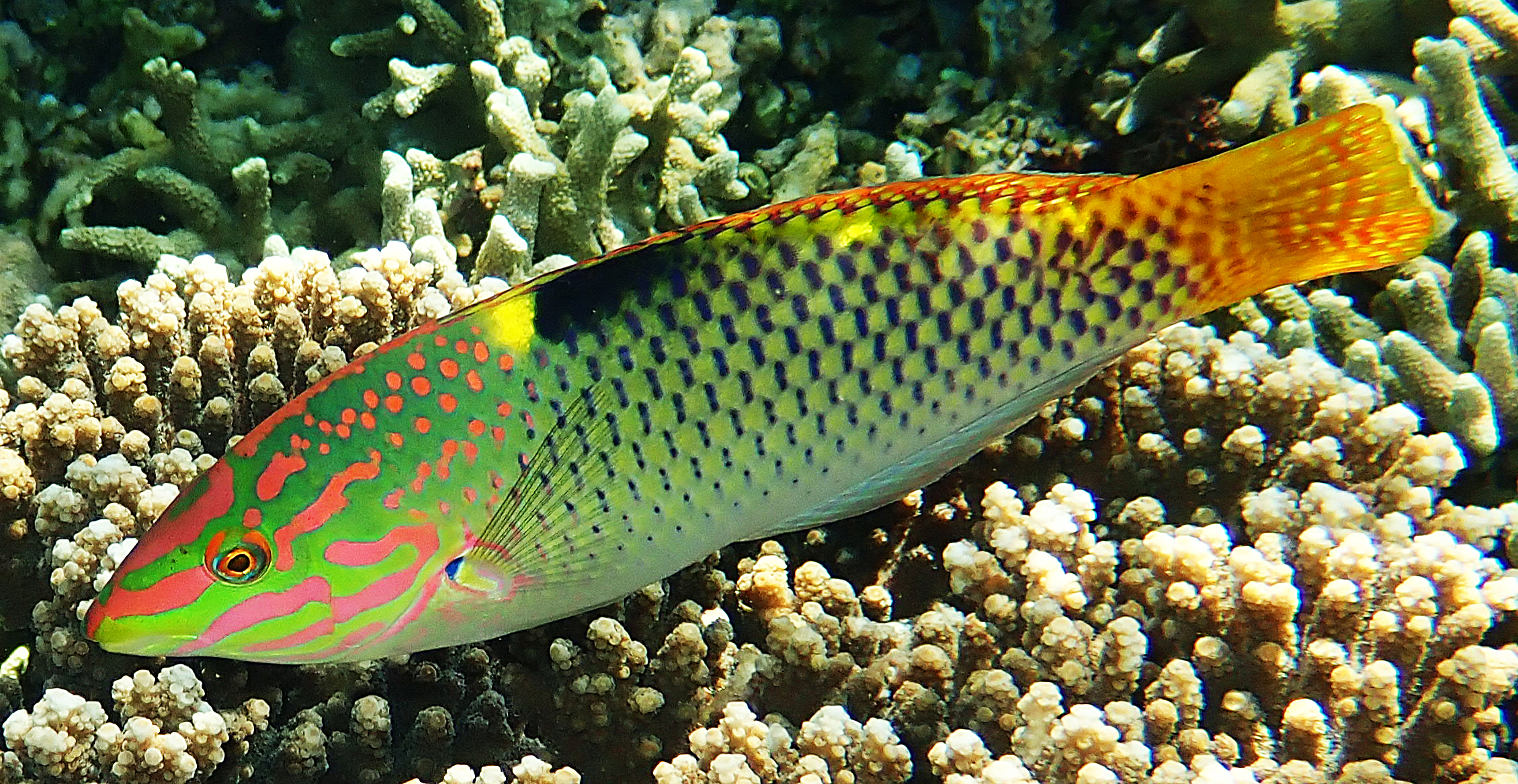
Colourful Wrasse. Copyright G. Beccaloni.
Day 8
By today you will have lost track of time and place, but your crew won’t have. They will have delivered you on schedule to the Patinti Strait and Doworalamo, where we visit a village of the famous sea gypsies, known in Eastern Indonesia as Sama-Bajo. Scattered widely through South-East Asia, sea gypsies spent their entire lives from birth to death on their small sailboats called lipa-lipa. Now the modern world has pushed them ashore. Landless, their homes are always built on stilts over coral reefs or the tidal margins of remote islands such as this one. We will also have opportunities for swimming, snorkelling and beach-combing before our ship continues on its northerly course.

Anemone Fish. Copyright G. Beccaloni.
Day 9
We will wake up off the western coast of Bacan, another of Indonesia’s historic spice sultanates. We go ashore to explore the forested slopes where Wallace made some of his greatest zoological discoveries, including the Moluccan Cuscus, the Standardwing Bird of Paradise, the world's largest bee Megachile pluto, and the huge and magnificent Golden Birdwing Butterfly. Wallace described the latter species as the "finest butterfly in the world". When he caught the first male in 1859 he wrote: "When I took it out of my net, and opened its gorgeous wings, I was nearer fainting with delight and excitement than I have ever been in my life; my heart beat violently, and the blood rushed to my head, leaving a headache for the rest of the day." Very few Westerners have ever seen this species alive and no groups of tourists have ever been taken to see it before. Of course there is no guarantee we will see it - but we will try very hard. We will also keep a close watch for these and a host of other animals, some of them endemic to these islands, including parrots, cockatoos, lorikeets, hornbills, the elusive cuscus and the endangered black macaque – the only monkey in Maluku. It’s the wrong side of the Wallace Line for monkeys; these ones were introduced hundreds of years ago from North Sulawesi.
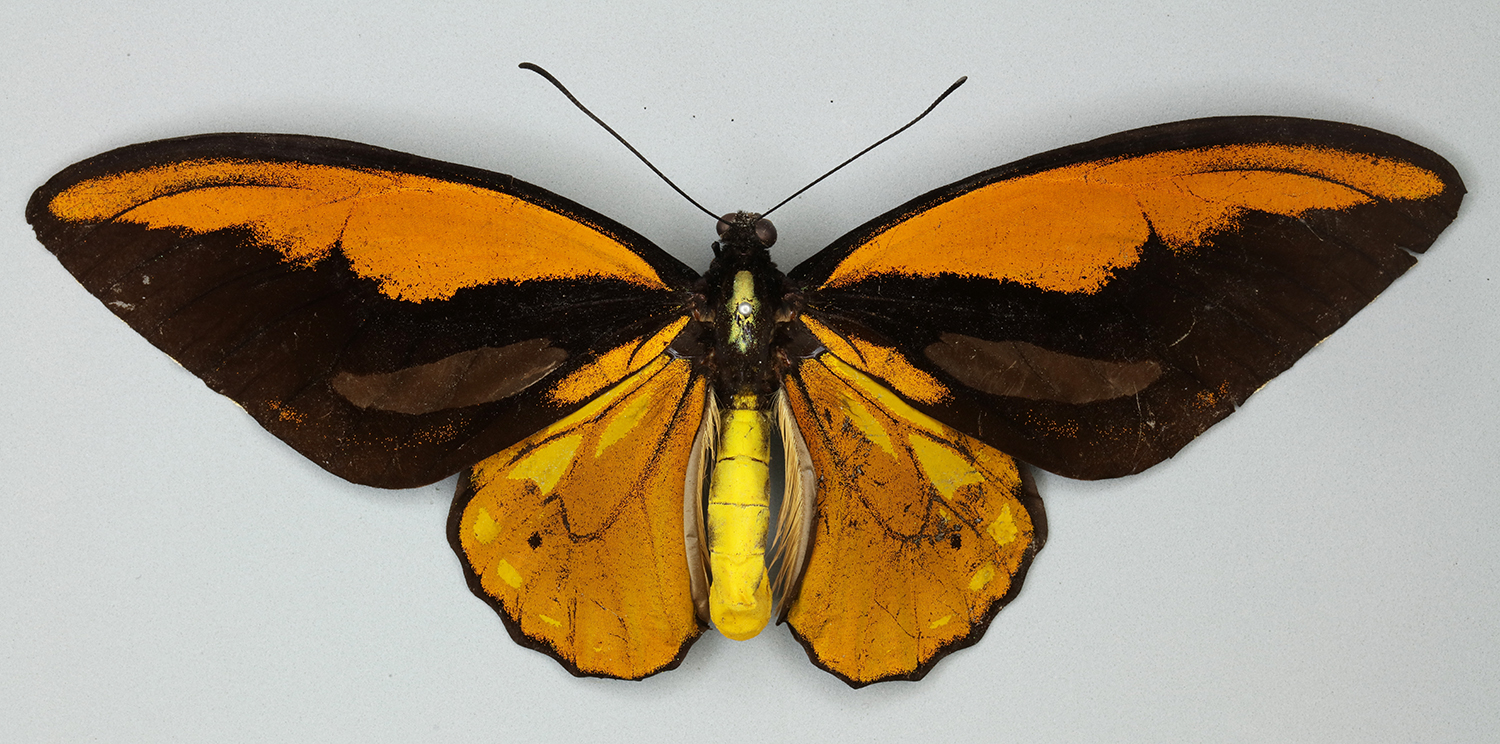
Top: Wallace's Standardwing Bird of Paradise. Bottom: Wallace's Golden Birdwing butterfly (this specimen was collected by Wallace himself on Bacan).
Day 10
Sunrise finds us in Indonesia’s most stunning seascape. Four perfect, brilliant-green volcanic-cone islands emerge from the sea in a straight line stretching south to north, parallel to the rugged, forested spine of the big island called Halmahera. They are Makian, Moti, Tidore and Ternate. Makian is dominated by volcanic Mount Kiebesi (1357 metres) towering over its palm-fringed, white-sand beaches and crystal clear waters. There are interesting expeditions ashore and good places to snorkel. Later we cruise towards Payahe Bay on the mainland of Halmahera, which was another of the Spice Sultanates formerly called Gilolo. Our landfall is a remote beach full of outrigger fishing craft, for an easy afternoon trek towards a forest waterfall.
Day 11
Today we will wake up off the coast of Halmahera just across from Ternate Island, with the mighty peaks of Ternate and Tidore as our dawn backdrop, ready to head ashore to the village of Dodinga after breakfast. This is the very place Wallace was staying when, in a malarial delirium, he came up with the idea of evolution by natural selection. Once he recovered he promptly wrote to Charles Darwin and set in motion events which led to him and Darwin to jointly publish the idea in 1858. Dodinga is a pretty little riverside village with friendly people, colourful houses and the ruins of an old Portuguese fort, and its importance in the history of science cannot be understated. After spending some time with the villagers, sharing some fresh coconuts and enjoying their hospitality, we will head back to the boat for lunch and then go off for an afternoon of snorkelling and relaxation.

Christmas Tree worms on coral. Copyright G. Beccaloni
Day 12
We reach the island of Ternate and our final destination. This colourful city was the centre of the spice trade for several centuries, and the imprint of the Dutch and the Portuguese can still be seen. In fact, its warehouses are still filled with fragrant piles of clove and nutmeg. Nearby is the splendid 17th-century, pagoda-style royal mosque, and the Sultan’s Palace with its rich collection of heirlooms. There’s a choice of forts to visit from the turbulent colonial era, such as well-restored Fort Tolukko (Portuguese, 1540). Wallace rented a house on Ternate for three years and used it as his base for the exploration of the Moluccas. It was whilst living here, very soon after returning from Dodinga, that he posted his legendary 'Letter from Ternate' containing his independently conceived theory of natural selection to Darwin. We will visit the probable site of his house near Fort Oranje, before going back to the Ombak Putih to say goodbye to the Ship's Naturalist, the captain and the crew. You will then be transferred to the airport and catch your flight to Jakarta or Bali.

Ternate at sunset. Copyright G. Beccaloni
MORE INFORMATION
The Ombak Putih has 12 comfortable, air-conditioned, en-suite cabins, each accommodating two adults in double or twin configuration. There are two triple cabins that can accommodate an extra child under 12 years old. The cost for a child is 50% of the adult fare
The cost per person is $7150 US and this includes all meals, park fees, activities, land visits, non-alcoholic drinks (alcoholic drinks are sold at cost price), laundry service (two items per day) and everything else whilst on board - you will not be disappointed! The cost of international and local flights to and from the boat are not included.
If you have any questions or would like to make a booking, please contact Michael Travers who works for SeaTrek Sailing Adventures in Bali: michael@seatrekbali.com Please mention that you saw this post on the Wallace Correspondence Project's website.
For more information about SeaTrek and their boats please see their website HERE


Add new comment